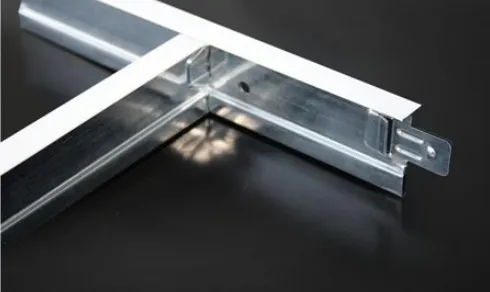- Afrikaans
- Albanian
- Amharic
- Arabic
- Armenian
- Azerbaijani
- Basque
- Belarusian
- Bengali
- Bosnian
- Bulgarian
- Catalan
- Cebuano
- Corsican
- Croatian
- Czech
- Danish
- Dutch
- English
- Esperanto
- Estonian
- French
- German
- Greek
- Hindi
- Indonesian
- irish
- Italian
- Japanese
- Korean
- Lao
- Malay
- Myanmar
- Norwegian
- Norwegian
- Polish
- Portuguese
- Romanian
- Russian
- Serbian
- Spanish
- Swedish
- Thai
- Turkish
- Ukrainian
- Uzbek
- Vietnamese
set. . 25, 2024 20:07 Back to list
ceiling access panel 600x600
Understanding Ceiling Access Panels A Focus on 600x600 Dimensions
When it comes to building construction and renovations, ceiling access panels play a crucial role in ensuring easy access to essential infrastructure, such as HVAC systems, electrical wiring, and plumbing. One of the most popular sizes for these panels is the 600x600 mm (approximately 24x24 inches) variant, which is widely used in commercial and residential spaces alike. This article delves into the significance of ceiling access panels, the specific advantages of the 600x600 dimension, and the various materials and installation options available.
What is a Ceiling Access Panel?
A ceiling access panel is a removable section of the ceiling that allows for maintenance and inspection of the systems hidden above. These panels provide an essential service by allowing technicians to reach vital components without having to remove larger sections of the ceiling or causing extensive damage. Access panels come in various sizes and configurations, but the 600x600 mm size is particularly favored for its versatility.
Why Choose a 600x600 Access Panel?
The choice of a 600x600 mm access panel has several advantages
1. Versatility This size is standard in many commercial and industrial environments, making it easy to find replacement panels or accessories.
2. Space Efficiency The square dimensions allow for even spacing within grid ceilings, optimizing aesthetics and functionality.
3. Ease of Installation Because the 600x600 panel size aligns with standard ceiling tiles, installation is straightforward. This uniformity simplifies the design and installation process for architects, builders, and contractors.
4. Accessibility The generous size provides ample space for technicians to maneuver their tools and perform necessary repairs or inspections without hassle. This accessibility is vital for minimizing downtime in operational facilities.
5. Aesthetic Appeal Many 600x600 access panels are designed to blend seamlessly with ceiling tiles, ensuring that they do not detract from the overall look of a space. They can be painted or covered to match the surrounding surfaces, maintaining the intended aesthetic.
Materials and Types of Access Panels
Ceiling access panels can be made from a variety of materials, each catering to specific needs
ceiling access panel 600x600

- Gypsum Board These panels are commonly used in drywall ceilings and can be easily painted or textured to match the surrounding ceiling. They offer a clean finish but may not be suitable for areas requiring frequent access.
- Metal Metal panels are typically more durable and can be used in environments where security is a concern. Depending on the gauge of the metal, these panels can withstand impact and are often used in commercial settings.
- Plastic Lightweight and corrosion-resistant, plastic panels are an excellent choice for moisture-prone areas like bathrooms and kitchens. They are easy to handle and install.
Installation Process
Installing a 600x600 ceiling access panel is a manageable task for most contractors. The process generally involves
1. Identifying the Location It’s essential to choose a location that provides access to necessary systems while maintaining the room’s aesthetic.
2. Cutting the Opening The correct size hole is cut into the ceiling grid to accommodate the panel. Care must be taken to ensure that this does not interfere with existing structures.
3. Installing the Frame If the panel requires a frame, it is fixed in place to provide support and stability.
4. Mounting the Panel The panel is then installed into the frame or the designated opening, ensuring it fits securely and level with the surrounding ceiling surface.
5. Finishing Touches Finally, any necessary finishing work, such as painting or sealing, is completed to ensure the panel blends seamlessly with the ceiling.
Conclusion
Ceiling access panels, particularly the 600x600 mm variety, serve as indispensable features in modern construction. Their blend of practicality, accessibility, and aesthetic adaptability makes them an ideal choice for various environments. Whether it’s for routine inspection, maintenance, or emergency access to critical infrastructure, these panels simplify a range of tasks while ensuring that the overall space remains visually appealing. As building designs evolve, the role of ceiling access panels will continue to be essential, facilitating smoother operations in a variety of settings.
-
Transform Interiors with PVC Gypsum Ceiling: A Stylish, Durable, and Moisture-Resistant SolutionNewsMay.19,2025
-
The Smart Interior Upgrade: Discover the Durability and Versatility of Gypsum Ceiling Access Panel SolutionsNewsMay.19,2025
-
The Smart Choice for Interior Design: Discover the Value of PVC Gypsum Ceiling SolutionsNewsMay.19,2025
-
Mineral Fiber Ceiling Tiles: The Smart Blend of Performance and AestheticsNewsMay.19,2025
-
Mineral Fiber Ceiling Tiles: The Superior Choice Over Gypsum for Sound and Fire SafetyNewsMay.19,2025
-
Mineral Fiber Ceiling Tiles: Eco-Friendly Strength and Style for Every CeilingNewsMay.19,2025







